On March 1st (St Davids Day) while taking the dogs for a walk, my son Daniel found a bumblebee grounded on the roadside. Concerned for its safety he carefully wrapped it in some tissues and brought it home. On arriving he left it in my custody hoping that I would be able to revive it.
All images taken with Canon EOS M5 – EF-M28mm f3.5 Macro IS STM

A fine looking but motionless Queen Bumblebee wresting on kitchen paper
It was probably a queen as she’s usually the first bee to venture out at the start of the warmer days. The problem is that March represents the threshold between winter and spring with unpredictable weather and temperatures that are likely to fool even the cleverest of bees into a false sense of security. One moment it’s warm and sunny and the next cold and wet! So it’s likely that she was caught out in a sudden shower or a cold spell. If the temperature of the thorax falls below 30 oC the bumblebee cannot take off.
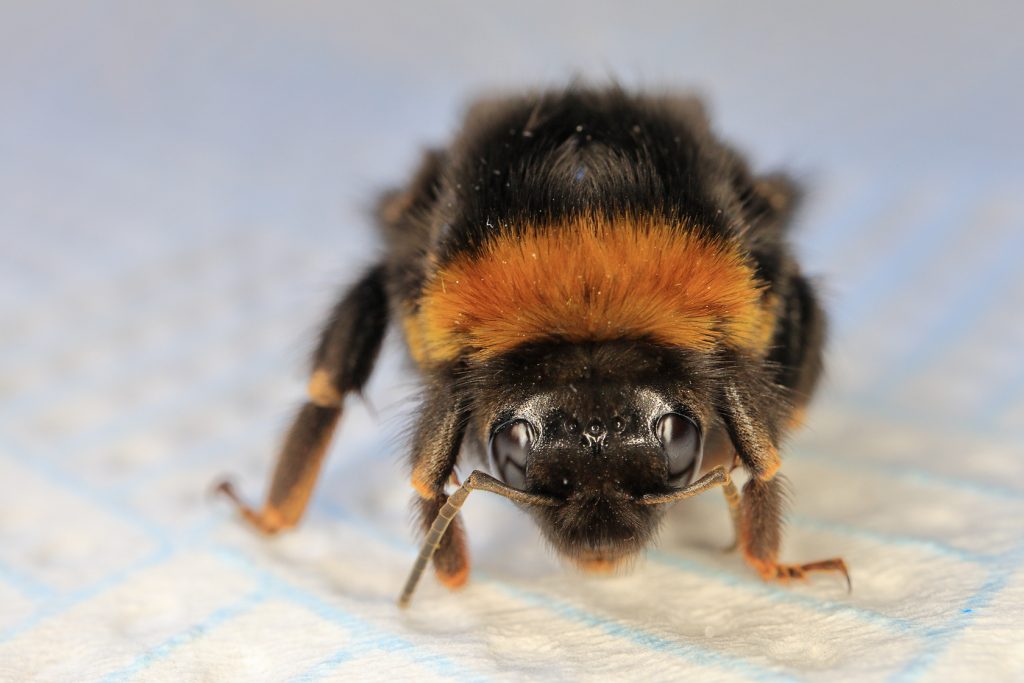
From this angle one can clearly see the three ocelli situated between the eyes.
In contrast to the multi-faceted eyes these are simple photo-receptors
(light detecting organs) consisting of a single lens used to detect movement.
Research from Queen Mary University of London has shown that bumblebee queens spend the majority of their time resting on the ground between very short dispersal flights, with very little feeding. This research suggests that rest is an underappreciated part of the bumblebee life-cycle and that providing areas of long grass and undisturbed leaf-litter in early spring is important to help ensure bumblebee queens have adequate cover. If you find a bumblebee queen resting in the road or on a pavement, when it is safe to do so, you could gently move it to a more sheltered location or on to a nearby bee-friendly flower.
After more than an hour the bee still showed no signs of movement, so I thought, best to put her somewhere warm, and feed her. Perhaps with warmth and feeding she would most likely fly off. As the RSPB suggest, I fed her using a 50/50 mixture of sugar and water, initially with a pipette, using a few drops on the kitchen top surface within her reach. Conscious that she could wet herself and get sticky I resolved to use a wet ear cotton swab and gently entice her to drink. After a few minutes I could see her probicis gently moving over the swab and drinking. Things seemed promising but she still seemed lethargic so I kept her inside until the sun decided to make an appearance.
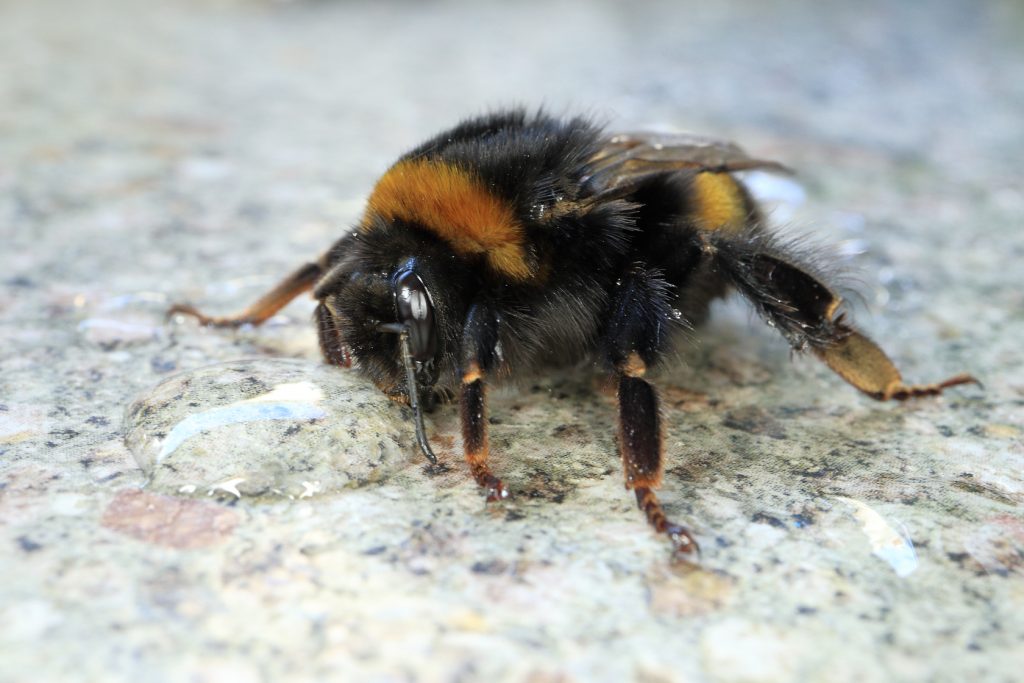
Don’t make the mistake I initially made of giving too much sugar/water as the mixture will crystallise and stick like glue to the bee’s head!
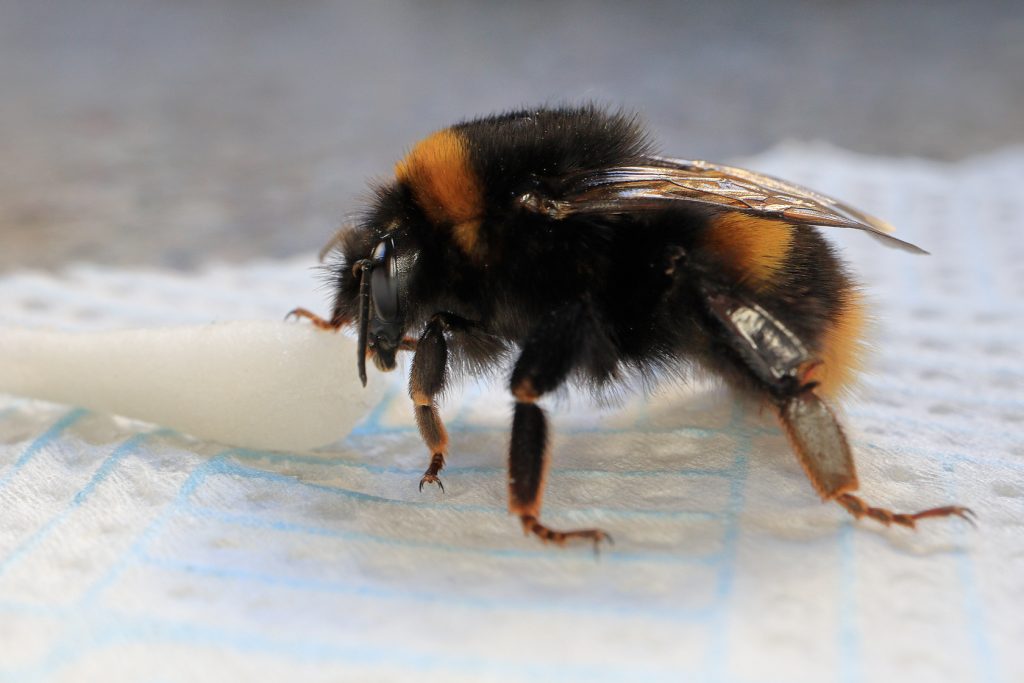
Much better to give the bee tiny amounts of sugar/water solution. One or two drops absorbed into an ear cotton bud is ample.
Later in the morning, once the sun came out, I placed the bumblebee on my shed roof. The roof being bitumen based absorbs the sun’s heat and warmed up very nicely, like a hot water bottle or electric blanket. It was quite breezy and I was a concerned that she might get blown away or else be gobbled up by a bird. I therefore kept a watch while also taking the opportunity to take photographs.
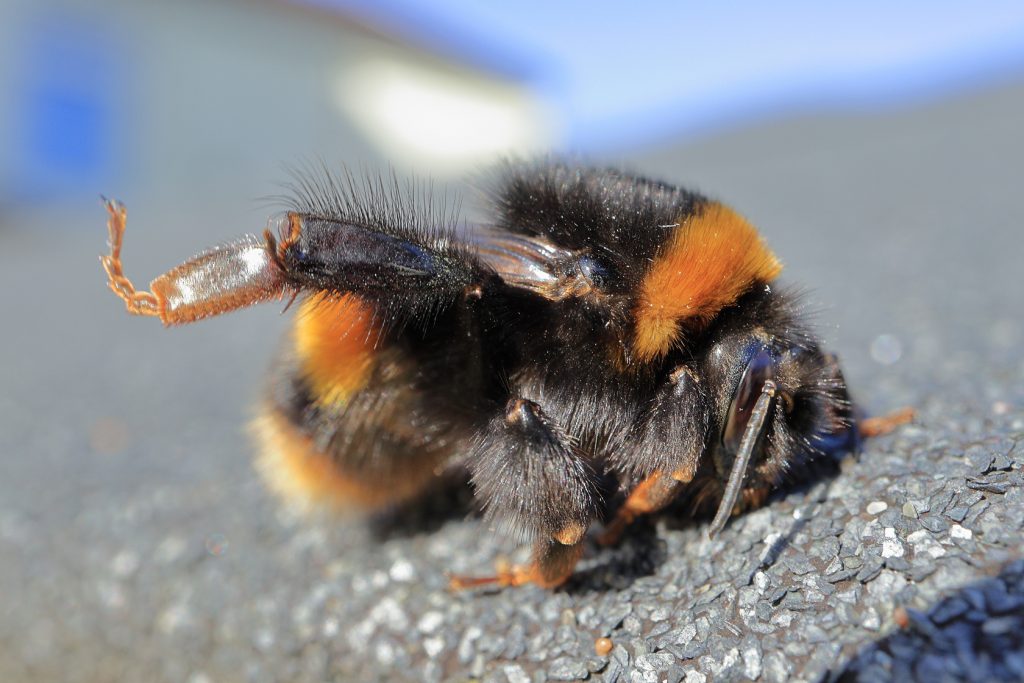
Showing signs of recuperation with leg stretching.
Unfortunately, this was only a temporary phase.
After a few hours the temperature had significantly dropped with threatening storm clouds suddenly appearing. Unfortunately, a gust of wind had eventually blown the poor bee onto the paving slabs and I made the decision to bring her in for the night and try releasing her again next day.
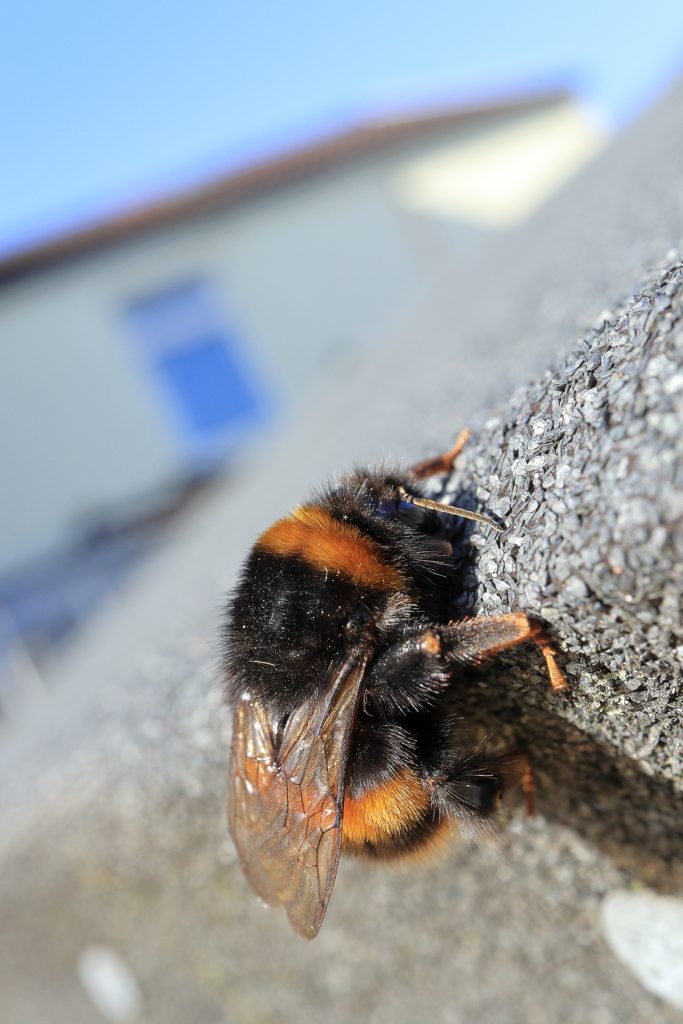
Hanging on for dear life on the edge of shed roof
The next day, after all my attempts of trying to revive the poor bumblebee, it was clear that she wasn’t going to revive and by the afternoon she died. It’s a sad fact of life that, like humans, sometimes no amount of caring is going to stop the natural process of death. It may be that this bee had some serious illness or simply that her time of life (most probably planted in her DNA) had come to an end? Nevertheless, we shouldn’t let such failures stop us from trying our best to help. For every failure there’s a success story around the corner and I can recollect other times when giving very basic ‘first aid’ to a tiring bee had made all the difference between life and death. Just think, saving a queen you may have saved and entire nest!
After further research, I have learnt of a few things to avoid when feeding bees:
• It is not advisable to use brown sugar as it is harder for bees to digest.
• Do not give bumblebees honey as this can contain pathogens (which is why honeybee keepers never feed shop-bought honey to their bees).
• Don’t leave any sugar water sitting out in your garden – this can prevent the bees from gathering precious pollen, and could be detrimental to their health. Use this technique only as an emergency – think of it as bee CPR!
• Providing bees with sugar water is only ever a temporary fix and should never become their main diet (that would be like a human swapping three meals a day for three cans of fizzy juice).
• Nectar and pollen from flowers contain the nutrients bees need to thrive, as well as the energy they require to survive. It is also important for bumblebees to be outside to complete their life-cycle so don’t be tempted to take them inside (unless absolutely necessary and not showing any movement after 45 mins).
• Finally, don’t make the mistake I made (see pic below) and give them too much water/sugar solution as it will crystallise and stick to them like glue!
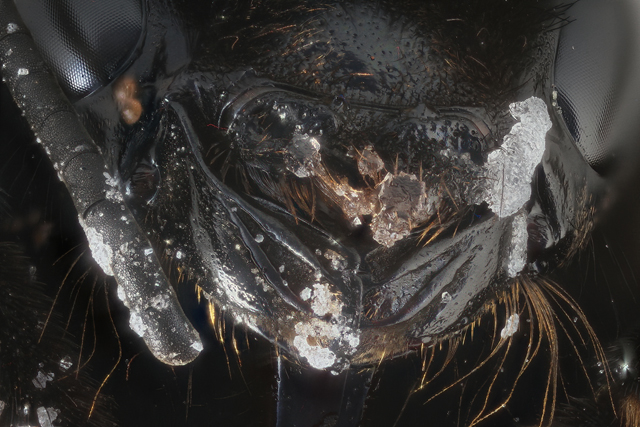
Avoid giving to much sugar/water solution. The picture clearly shows the crystallised sugar sticking like glue to the bee’s mandibles and antenna.
Image above: Studio work based on 40 images (steps of half turns – 100 digit increments on fine focus knob on Nikon K-Le microscope). Assembled in Zerene Stacker (Pmax). Canon 7D + adapters + Ashai Pentax Bellows II + Cone diffuser, Plan 4x Amscope objective, ISO-400, 1/200sec, 2 diffused flash (Yongnuo YN24EX at 1/64). Wemacro vertical stand with addition of 11in magic arms for holding flash heads. Total magnification on APS-C sensor = approx 7x.
I hope this information is helpful and please do your best to protect our precious bees.

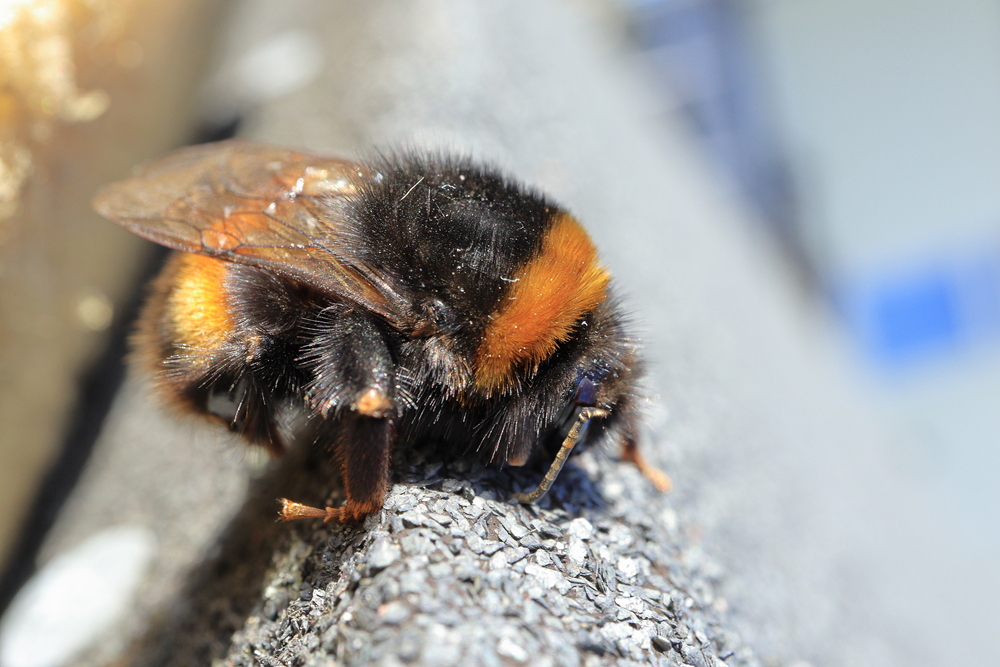

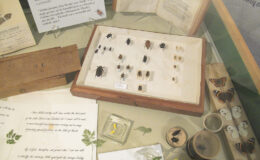
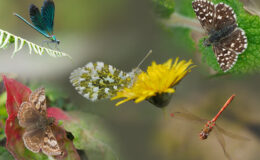
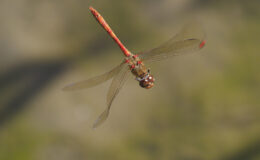
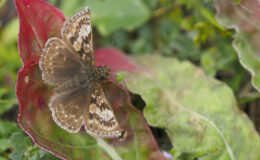
Kay
January 14, 2023 5:33 pmWhat a great article, Alex. Thank you. Both of my 11 year old granddaughters have learned pollinator first aid at their individual schools here in Ireland. The schools have taught them about bee and pollinator life-cycles, healthy habitats and vulnerabilities. They and their classmates are now advocates for the welfare of our insect populations and are even teaching us older folks bee CPR.
Alex
September 20, 2023 3:23 pmHi Kay,
Apologies for taking so long to reply to your email.
Just wanted to say that it’s wonderful that your 11-year-old granddaughters are taking such an interest in the natural world. They go to a school that cares about the environment and teaches about pollinators and habitats.
I applaud the actions of your granddaughters. It’s to such young citizen scientists that the future of our planet depends.